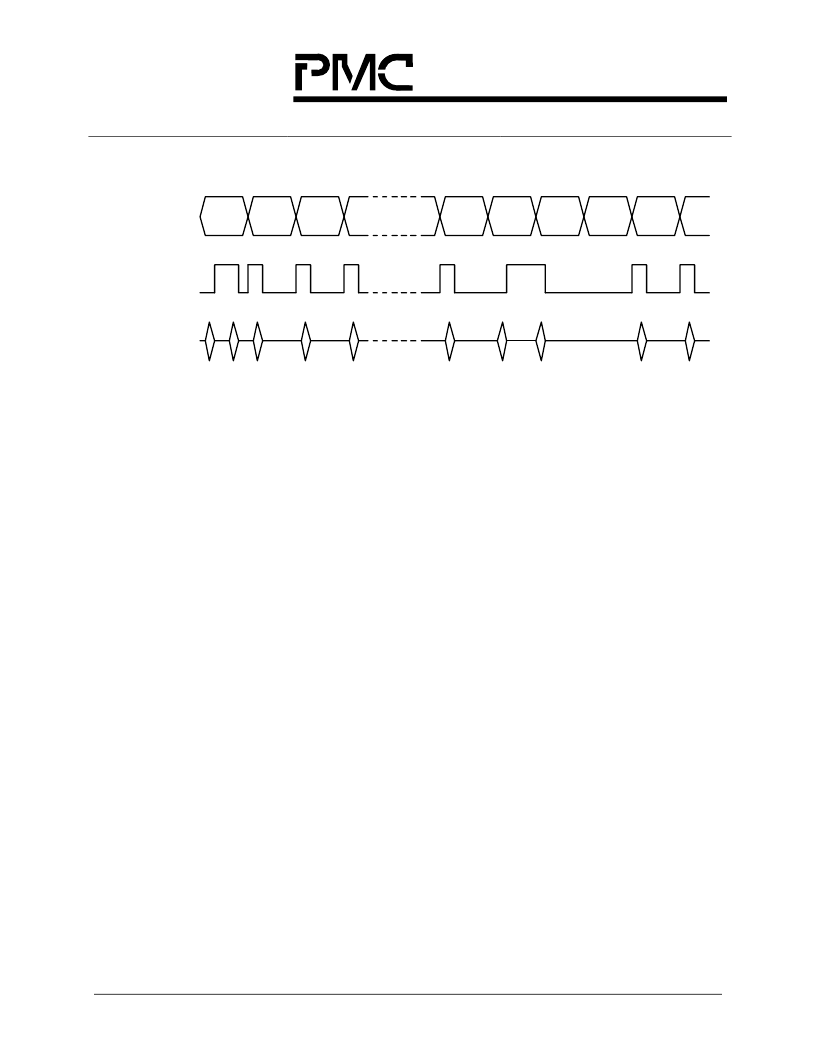- 您現(xiàn)在的位置:買賣IC網(wǎng) > PDF目錄378055 > PM6344 (PMC-SIERRA INC) Ultraframer DS3/E3/DS2/E2/DS1/E1/DS0 PDF資料下載
參數(shù)資料
| 型號(hào): | PM6344 |
| 廠商: | PMC-SIERRA INC |
| 元件分類: | 數(shù)字傳輸電路 |
| 英文描述: | Ultraframer DS3/E3/DS2/E2/DS1/E1/DS0 |
| 中文描述: | DATACOM, FRAMER, PQFP128 |
| 封裝: | 20 X 14 MM, PLASTIC, QFP-128 |
| 文件頁數(shù): | 213/256頁 |
| 文件大小: | 1030K |
| 代理商: | PM6344 |
第1頁第2頁第3頁第4頁第5頁第6頁第7頁第8頁第9頁第10頁第11頁第12頁第13頁第14頁第15頁第16頁第17頁第18頁第19頁第20頁第21頁第22頁第23頁第24頁第25頁第26頁第27頁第28頁第29頁第30頁第31頁第32頁第33頁第34頁第35頁第36頁第37頁第38頁第39頁第40頁第41頁第42頁第43頁第44頁第45頁第46頁第47頁第48頁第49頁第50頁第51頁第52頁第53頁第54頁第55頁第56頁第57頁第58頁第59頁第60頁第61頁第62頁第63頁第64頁第65頁第66頁第67頁第68頁第69頁第70頁第71頁第72頁第73頁第74頁第75頁第76頁第77頁第78頁第79頁第80頁第81頁第82頁第83頁第84頁第85頁第86頁第87頁第88頁第89頁第90頁第91頁第92頁第93頁第94頁第95頁第96頁第97頁第98頁第99頁第100頁第101頁第102頁第103頁第104頁第105頁第106頁第107頁第108頁第109頁第110頁第111頁第112頁第113頁第114頁第115頁第116頁第117頁第118頁第119頁第120頁第121頁第122頁第123頁第124頁第125頁第126頁第127頁第128頁第129頁第130頁第131頁第132頁第133頁第134頁第135頁第136頁第137頁第138頁第139頁第140頁第141頁第142頁第143頁第144頁第145頁第146頁第147頁第148頁第149頁第150頁第151頁第152頁第153頁第154頁第155頁第156頁第157頁第158頁第159頁第160頁第161頁第162頁第163頁第164頁第165頁第166頁第167頁第168頁第169頁第170頁第171頁第172頁第173頁第174頁第175頁第176頁第177頁第178頁第179頁第180頁第181頁第182頁第183頁第184頁第185頁第186頁第187頁第188頁第189頁第190頁第191頁第192頁第193頁第194頁第195頁第196頁第197頁第198頁第199頁第200頁第201頁第202頁第203頁第204頁第205頁第206頁第207頁第208頁第209頁第210頁第211頁第212頁當(dāng)前第213頁第214頁第215頁第216頁第217頁第218頁第219頁第220頁第221頁第222頁第223頁第224頁第225頁第226頁第227頁第228頁第229頁第230頁第231頁第232頁第233頁第234頁第235頁第236頁第237頁第238頁第239頁第240頁第241頁第242頁第243頁第244頁第245頁第246頁第247頁第248頁第249頁第250頁第251頁第252頁第253頁第254頁第255頁第256頁

STANDARD PRODUCT
PMC-Sierra, Inc.
PM6344 EQUAD
PMC-951013
ISSUE 5
QUADRUPLE E1 FRAMER
200
Figure 26
- XFDL Normal Data Sequence
Flag
D1
D2
Dn
CRC1 CRC2
Flag
D1
D1 D2
D3
D4
D2
D3
TDLINT[x]
D[7:0]
INTE
EOM
INTE
D1
INTE
Serial Data
inserted into
ESF FDL
This diagram shows the relationship between XFDL inputs and outputs for the
case where interrupts and CRC are enabled for regular data transmission. The
process is started by setting the INTE bit in the XFDL Configuration Register to
logic 1, thus enabling the TDLINT[x] signal. When TDLINT[x] goes high, the
interrupt service routine is started, which writes the first byte (D1) of the data
frame to the XFDL Transmit Data Register. When this byte begins to be shifted
out on the data link, TDLINT[x] goes high. This restarts the interrupt service
routine, and the next data byte (D2) is written to the XFDL Transmit Data
Register. When D2 begins to be shifted out on the data link, TDLINT[x] goes
high again. This cycle continues until the last data byte (Dn) of the frame is
written to the XFDL Transmit Data Register. When Dn begins to be shifted out on
the data link, TDLINT[x] again goes high. Since all the data has been sent, the
interrupt service routine sets the EOM bit in the XFDL Configuration Register to
logic 1. The TDLINT[x] interrupt should also be disabled at this time by setting
the INTE bit in the XFDL Configuration Register to logic 0. The XFDL will then
shift out the two-byte CRC word and closing flag, which ends the frame.
Whenever new data is ready, the TDLINT[x] signal can be re-enabled by setting
the INTE bit in the XFDL Configuration Register to logic 1, and the cycle starts
again.
相關(guān)PDF資料 |
PDF描述 |
|---|---|
| PM6388 | CONNECTOR |
| PM6388-RI | Ultraframer DS3/E3/DS2/E2/DS1/E1/DS0 |
| PM6541 | E1XC EVALUATION DAUGHTERBOARD |
| PM6650 | MSM6150 CHIPSET SOLUTION |
| PM73121 | AAL1 Segmentation And Reassembly Processor |
相關(guān)代理商/技術(shù)參數(shù) |
參數(shù)描述 |
|---|---|
| PM6344-RI | 制造商:PMC 制造商全稱:PMC 功能描述:QUADRUPLE E1 FRAMER |
| PM6388 | 制造商:PMC 制造商全稱:PMC 功能描述:OCTAL E1 FRAMER |
| PM6388RI | 制造商:PMC-Sierra 功能描述: |
發(fā)布緊急采購,3分鐘左右您將得到回復(fù)。